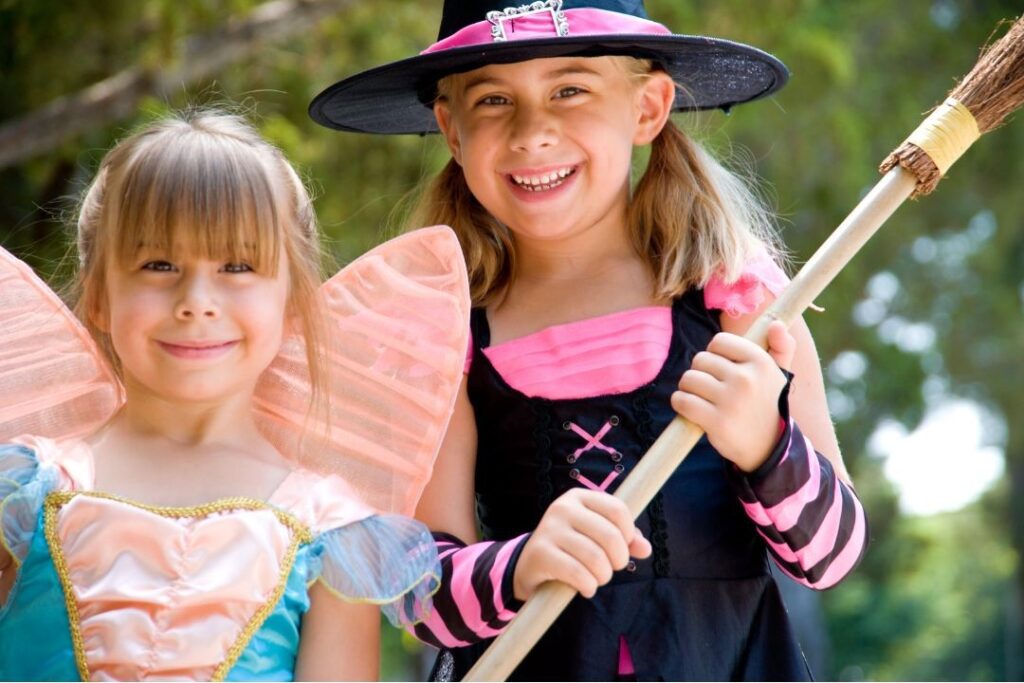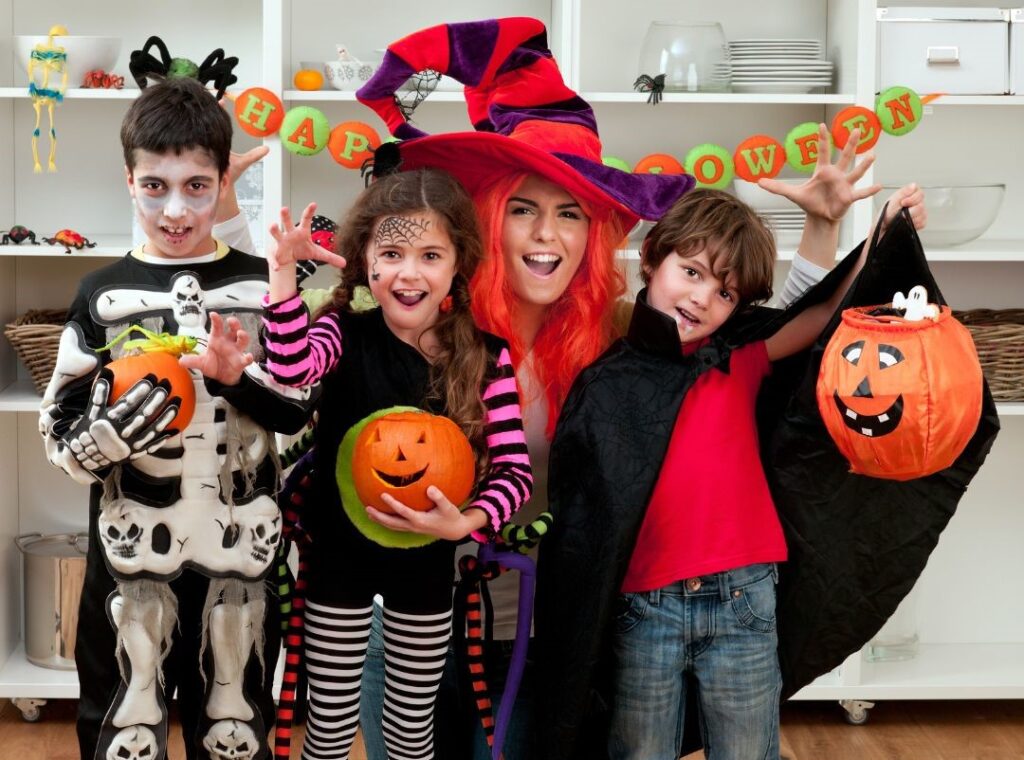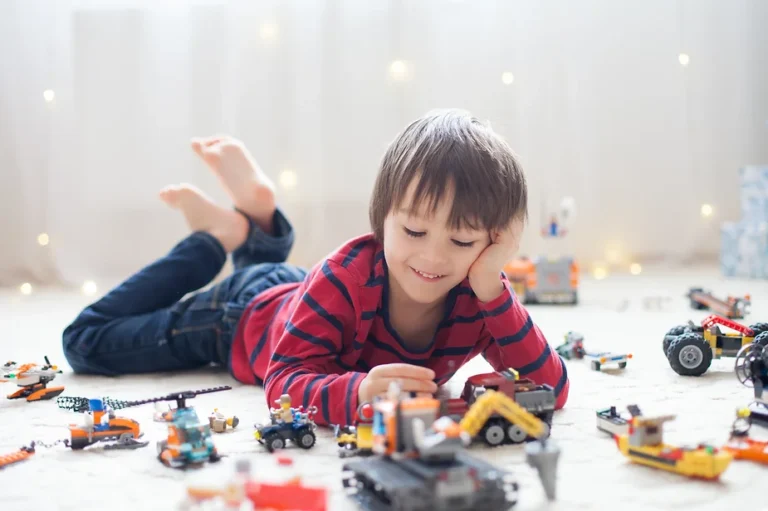How To Create A Fantastic Sensory Friendly Halloween

Create a sensory friendly Halloween with practical tips to ensure all kids, including those with sensory sensitivities, can enjoy the fun.
This post may contain affiliate links and I could earn a small commission at no cost to you. However, I will never recommend anything that I do not believe in or use myself. You can read more about my disclosure policy here.
Halloween is right around the corner, and for many families, it’s a time of excitement, creativity, and fun. But for kids with sensory processing disorder or sensory sensitivities, anxiety, or autism, it can feel like sensory overload. Here’s a stat that might surprise you: according to the CDC, 1 in 6 children has sensory processing differences. That means traditional Halloween celebrations—loud, chaotic, and unpredictable—might not be the best fit for a lot of kids.
But here’s the good news: you don’t need to sacrifice the magic of Halloween to create a more inclusive experience. With some simple adjustments, you can plan a sensory friendly Halloween that’s both fun and stress-free for all children. Whether it’s tweaking the costumes, rethinking the decorations, or attending low-key events, there are real ways to ensure no one misses out.
So let’s dive into practical, actionable tips to help you make this Halloween a celebration that works for every child. Ready to create a more sensory-friendly experience? Let’s get started!
How To Create A Sensory Friendly Halloween

Preparing for a Sensory Friendly Halloween
Halloween decorations, costumes, and the overall atmosphere can sometimes feel like sensory overload. Bright, flashing lights, loud noises, and crowds can be too much for some kids, while costumes with itchy fabrics or tight fits can cause discomfort. Here’s how to help your child manage these challenges:
1. Talk About What to Expect
Preparation is key. Walk your child through what happens on Halloween, from decorations and costumes to trick-or-treating and the types of noises they might hear. You can even use a personalized social story to introduce the concept of Halloween. This can help reduce anxiety and create predictability, especially for children with autism.
2. Create a Safe Environment
Bring along sensory-friendly tools like noise-canceling headphones, sunglasses, or a favorite fidget toy. These can provide comfort if things get overwhelming. You might also want to avoid areas with strobe lights, fog machines, or animatronics that could trigger sensory sensitivities.
3. Choose Comfortable Costumes
Costumes are a big part of Halloween, but they can also be a sensory nightmare for some kids. Choose soft, comfortable fabrics, and avoid anything too tight or itchy. Many families opt for costumes made from everyday clothes to ensure comfort, making it easier to create a sensory friendly Halloween experience.
Managing Scary Decorations and Sounds
Halloween decorations are meant to be spooky, but for children with sensory processing disorder or sensory sensitivities, anxiety, or autism they can be downright frightening. Flashing lights, eerie sounds, and creepy characters might be entertaining for some but overwhelming for others. Here’s how you can keep things manageable:
1. Focus on Fun, Not Fear
Explain to your child that all the spooky decorations and costumes are just pretend. Play a game where you point out something silly about each decoration to lighten the mood, helping create a sensory friendly Halloween where fun comes first.
2. Scope Out Your Route
Before Halloween night, take a walk around the neighborhood to identify houses with potentially scarier decorations. This helps your child prepare and decide which houses they might want to avoid for a smoother, sensory friendly Halloween outing.
3. Opt for Sensory-Friendly Events
Many communities host sensory friendly Halloween events or “trunk-or-treat” gatherings in calmer environments. These events are often well-lit and quieter, creating the perfect atmosphere for a sensory friendly Halloween.

Trick-or-Treating Tips for a Sensory Friendly Halloween
Trick-or-treating can be the highlight of Halloween, but the sights, sounds, and surprises can sometimes be overwhelming. Here’s how to make it a sensory friendly Halloween experience for your child:
1. Practice Ahead of Time
Consider a practice round of trick-or-treating before Halloween to help your child feel comfortable with the process. This can help ease anxiety and ensure a smoother sensory friendly Halloween.
2. Keep It Short
There’s no need to visit every house on the block. Stick to a smaller route and take breaks as needed to avoid sensory overload. Keeping it short and sweet ensures a positive sensory friendly Halloween for everyone involved.
3. Use a Communication Badge
For nonverbal children or those who have limited communication skills, a badge or card explaining their communication style can help others understand your child’s needs without pressure. This is another way to ensure a sensory friendly Halloween experience for your child.
4. Create Alternative Traditions
If traditional trick-or-treating isn’t right for your family, there are plenty of ways to celebrate at home. You can set up Halloween sensory activities, host a spooky-themed movie night, or let your child hand out candy to trick-or-treaters while maintaining a calm, sensory friendly Halloween atmosphere.
Related: Spooky Halloween Sensory Activities For Kids Of All Ages
- How To Create The Best Halloween Jello Sensory Bin
- How to Make The Best Homemade Halloween Slime
- How To Create The Best Halloween Sensory Bin
Halloween Safety Tips
With all the excitement, Halloween night can sometimes get chaotic. Here are some general safety tips to keep in mind, ensuring a safe and smooth Halloween:
1. Stay Visible
Make sure your child is easy to see with reflective clothing or glow sticks. This helps ensure their safety, especially for children who may wander or become distracted during the excitement of the night. For parents, wear something that distinguishes you from the crowd so your child can easily find you.
2. Stick Together
If your child tends to wander or get distracted, stay in small groups and hold hands while trick-or-treating. Before you go trick or treating, take a picture of your child in their costume. This will ensure you have a recent picture in case they get lost.
3. Have Identification Ready
For children who are nonverbal, or prone to wandering or eloping, ensure they have identification on them, such as a name tag with your phone number in their pocket.
Related: Elopement And Autism: How To Handle Your Child Eloping
Final Thoughts
Halloween can be a magical time, and it doesn’t have to look the same for everyone. Whether your child enjoys trick-or-treating, dressing up, or prefers a more low-key celebration, there are plenty of ways to make it a positive, sensory friendly Halloween experience. By preparing in advance, staying flexible, and keeping inclusivity in mind, you can create lasting memories while ensuring Halloween is fun for every child.
Happy Halloween, and here’s to a fun, safe, and sensory friendly holiday!
Recommended
- Spooky Halloween Sensory Activities For Kids Of All Ages
- Elopement And Autism: How To Handle Your Child Eloping
- How to Connect with Your Autistic Child
- Common Warning Signs Of Sensory Processing Disorder In Kids
- How to Calm Autistic Meltdowns: 7 Tips that Work






